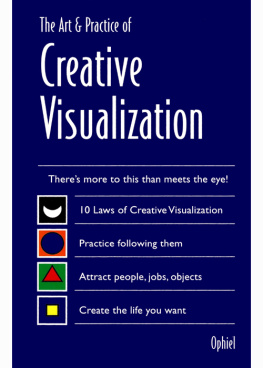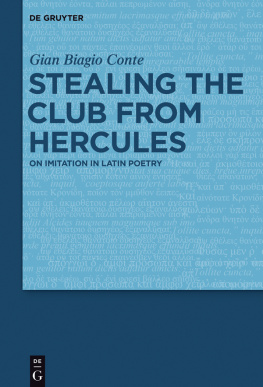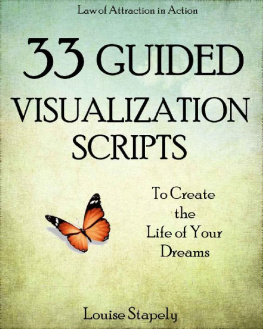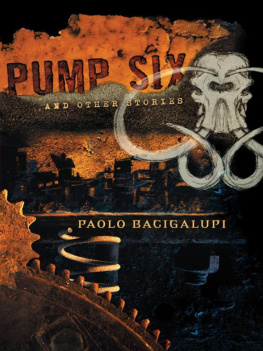INTRODUCTION
The two essays collected in this little book deal with different subjects, yet they are both addressing some deep needs of contemporary man.
The first essay, On Ancient and Modern Relativism , hinges on the kind of philosophy, which clever people of our time are more and more frequently adopting, in order to live through its powerful dynamics and recurrent crises without suffering too much damage. If we were to express it with one word, we could define this philosophy as relativism. The essay is in fact introduced by its definition and, while starting from the description of the more ancient phases of such current of thought, it will extend to our present time.
The second essay, Art as Creative Visualization , is about art, an activity which transcends the economic aspects of our existence and can offer to its lovers emotional, creative and sometimes cathartic stimuli, leading to a higher level of perception.
Each of these fields implies some very complex and sophisticated problems, as they both are still grappling with difficult questions; and yet, they could somehow find their answers.
The conceptual line leading to relativism has undergone several philosophical, ethical and psychological failures. Of crucial importance for the achievement of this doctrine have been the events, which have shattered the ideological mindset. Ideologies have been dogmatic axioms, that ruled personal and social reality, while also claiming its total control. During the 20 th century, ideologies have been quite successful, as whoever had to endure them, or saw them as a creed very well knows. Yet, at a certain point, they collapsed and this was a quite remarkable event for the culture of that century. But, all those who had believed in their thaumaturgic powers, were left deprived of the inner support they had granted to their followers, who were then cast into a distressing emptiness.
Such situation has caused a state of uncertainty to a great number of bewildered and disillusioned individuals. Moreover, in addition to that collapse, surfaced all the problems generated by the sciences playing the leading role in the second half of the 20 th century, such as quantum mechanics, thermodynamics and cosmology. Those sciences (and other less popularly known) aroused a great deal of interest in a dimension of reality, which had been little considered before, consisting of elementary particles, dispersion of energy, cosmic phenomena, laws of nature, waves, particles and the like. This second factor together with new revolutionary technologies, such as computers has generated a complex cognitive framework, difficult to understand. It was a this point then, that the character I have described as the man without certainties made his appearance.
I have tried to grasp and to describe this social and human condition in an essay (published in 1991), whose title in fact hinted to the individual reeling under the blows of such events but who, however, was beginning to appreciate the freedom he was offered as a consequence of the fall of the pre-existing culture. This is the reason why I chose for my essay the following title: The Man Without Certainties and His Qualities . In the second part of that title I ironically subverted the title of Robert Musils famous novel, The Man Without Qualities , published in the 1930s. By proposing this expression, which is antinomic to Musils title, I suggested the idea that a brave person could live and find his fulfilment outside the constraining culture ruling over the first half of the 20 th century. He could actually live a new kind of life, better than the one ideologically dictated, intellectuals had predicted and promised. A creative life, full of discoveries.
When my paper was published, many highbrows were puzzled and looked down on me, so that I felt a sense of loneliness; but it only lasted a short time, because I was convinced that my thesis was right. Eventually though, the risk I had taken, proved itself to be less daring than many had thought. Why so? Because the man without certainties really existed, he was actually, at the end of the century, a central figure, a real, actual entity. By just making his appearance, he was raising problems which someone had to acknowledge. He represented an anthropological category, which could be detected in many parts and at many levels of society and which one had to reckon with, if we didnt want to support an obsolete world view.
Almost twenty five years have gone by, a quarter of a century of relative social and political peace for the Western world, and yet many have experienced cognitive, ethical and psychological problems.
Today one cannot help talking about a new situation and trying to identify its characteristics. This is what I intend to do in the first of my present essays, by suggesting a stabilization of the man without certainties, according to a well defined form of existence, and by adopting a relativistic philosophy.
In my essay I have ascribed therapeutic, as much as epistemic properties to relativism. I have seen, in those who have embraced relativism, a successful species, fully aware and widespread throughout our contemporary cultural scene. A substantial human category then, whose features can be analyzed and interpreted. In fact, at the end of my essay, I will outline a synthetic portrait of the relativistic man.
The reader will see how I have discussed the subject. But it is important to state, right from the start, that the relativism we are experiencing today is connected to structural as well as cultural factors, which are both different from the ones that had determined the ancient version of relativism, as we can found it in ancient Greece. In my opinion, such difference is related to the fundamental needs of todays man, and therefore it can neither be avoided nor neglected.
The topic of my second essay is the crisis of contemporary art, and I think we should find some satisfactory suggestions in order to restore the social role it deserves; art, in fact, responds to an actual need of todays man.
The concept I will now illustrate is the core of my essay, Art as Creative Visualization . The sciences which boomed during the second half of the 20 th century, have powerfully affected our contemporary visual phenomenology. Phenomenology (i.e. the phenomena as they appear according to a certain reality) was previously related to inert objects, motionless in time and space: landscapes, portraits, still lifes, statues, sculpture groups, and so on. The main characteristic of all these forms was stability and the fact that they belonged to a relatively precise time. The new science instead, has revealed a realm of hidden, constantly flowing entities, where there is neither stability nor a connection with a given time. Science today shows us elementary particles, quantum, waves and corpuscles, energy currents, cosmic events and natural laws, and tries to describe more or less stable connections, but which are almost always awkward.










